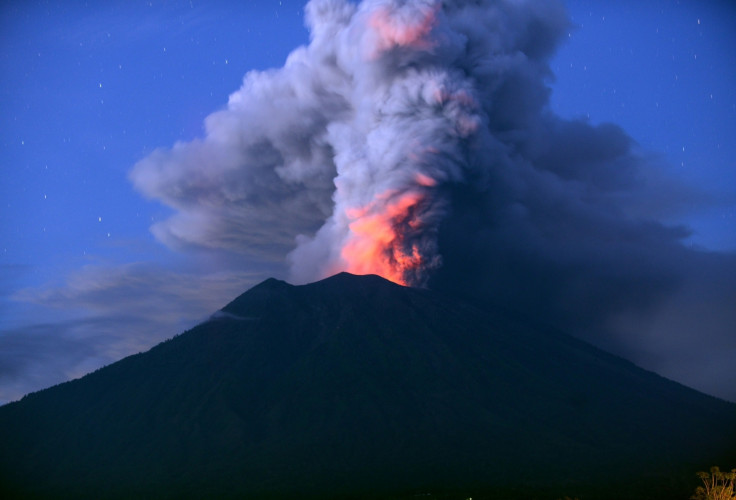Could Bali's Mount Agung eruption affect global climate?
Millions of tonnes of ash spewed into atmosphere can severely reduce Earth's temperatures.
Mount Agung on the Indonesian island of Bali is on the verge of a full-scale eruption with huge quantities of ash and dust spewed into the atmosphere as local authorities attempt to evacuate more than 100,000 people from the danger zone.
On Tuesday (28 November), the country's National Disaster Management Authority declared the highest level of alert for the volcano. The number of eruptions was increasing and a large explosion was possible, they warned.
Although scientists are unable to predict exactly how events will play out, the current ejection of ash, lava and other materials is likely to continue for weeks.
There is even a chance that the eruptions could affect the global climate.
When volcanoes erupt they throw millions of tonnes of ash and dust particles, as well as gases, into the atmosphere. Larger particles fall to the surface fairly quickly but smaller particles can accumulate to such an extent that solar radiation is blocked, creating a cooling effect on the area below.
The smallest particles can reach the stratosphere and spread over huge areas with atmospheric circulation patterns. This can extend the cooling effect – which may last for months, or even years - over large areas of the Earth.
Chris Colose, a Nasa scientist, highlighted in a tweet the necessary conditions for an eruption to have a significant impact:
To have a notable climate impact, there needs to be an explosive enough eruption (to get material in the stratosphere) and a sulfur-rich eruption (the SO2 converts to sulfate aerosol, which is what radiatively matters).
— Chris Colose (@CColose) November 27, 2017

Volcanoes often emit sulphur dioxide during eruptions, a compound that is even more effective than ash for creating a cooling effect. The sulphur makes its way into the stratosphere where it combines with water to form sulphuric acid aerosols which can reflect the sun's rays.
In extreme cases, the cooling caused by eruptions can wreak havoc on the global climate. The year after the 1815 eruption of Indonesia's Mount Tambora - the deadliest in human history - became known as the 'Year Without a Summer' due to reduced worldwide temperatures that caused crops to fail as far away as Europe and America. It is thought that an additional 100,000 people may have died around the world as a result.
While it is difficult to predict the impact that the current eruption will have, previous volcanic activity may give us some idea.
Mount Agung's eruption in 1963 – which killed more than 1,600 people – reduced global temperatures by between 0.1 and 0.2 degrees Celsius for a year.
Eruptions also release large quantities of greenhouse gases, such as water vapour and carbon dioxide, although the warming effects of these gases are trivial compared to the combined cooling impacts of the ash, dust and sulphur.
It is possible that the current eruption will have little impact on world temperatures. However, there were periods in ancient history where extreme volcanic activity over millions of years contributed to long-term global warming trends.





















